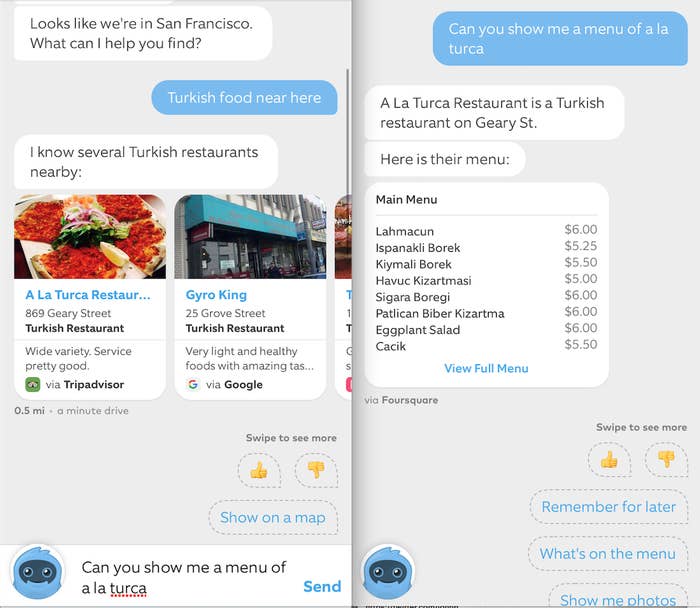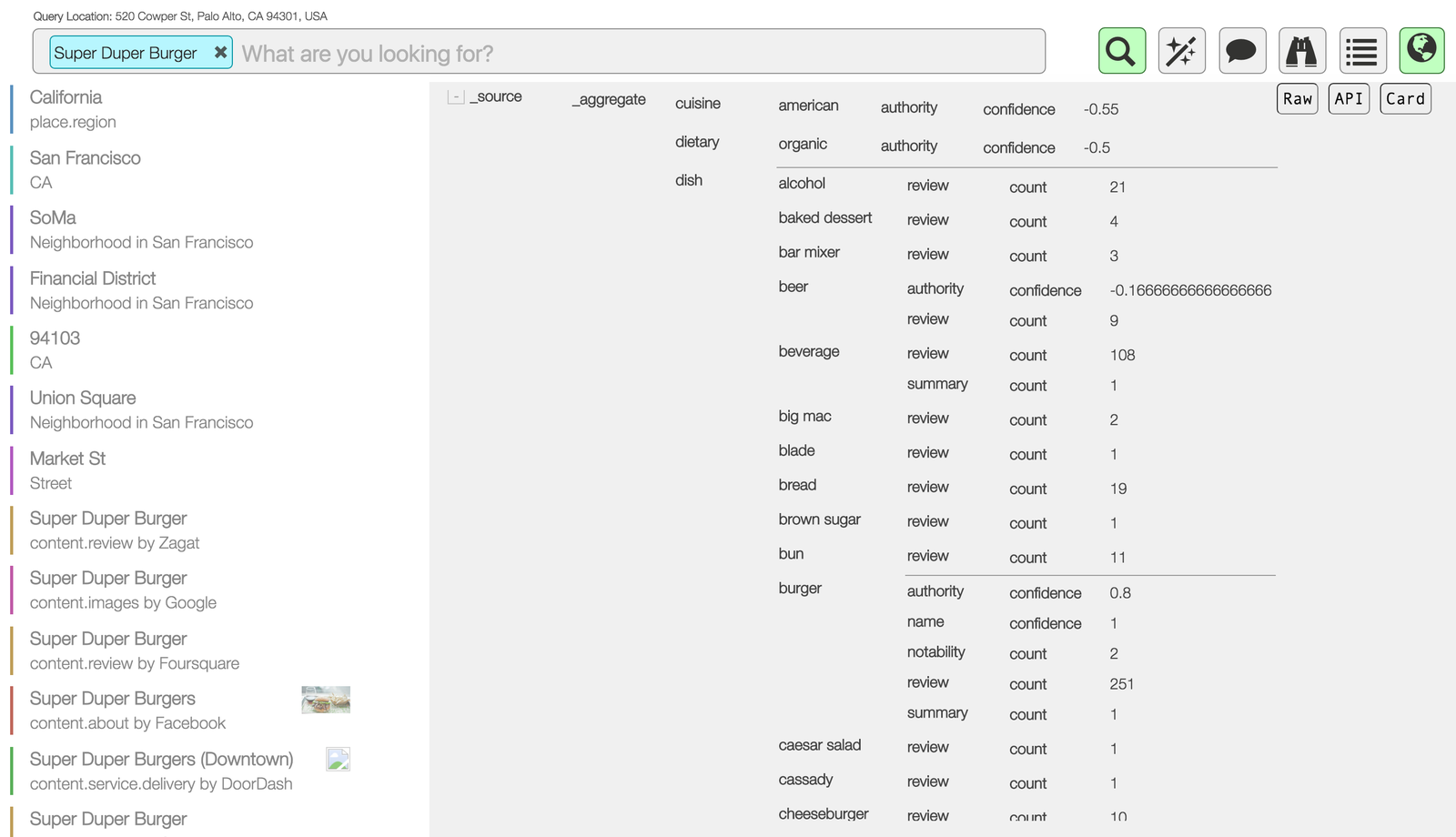
For the past few weeks, whenever I’ve found myself looking for a place to eat or drink, I’ve turned to Ozlo, a bot on my phone, for help. Meeting up with a friend one Sunday morning, I wrote “coffee nearby,” and he quickly returned with a list of local coffee shops. When I asked Ozlo to show me the shops on a map, he dropped one into the conversation. (By the way, Ozlo is male in gender according to his creators.)
Ozlo is another in a rapidly lengthening conga line of AI-powered chatbots. More than two years in the making, he currently specializes in food and drink. Flush with with $14 million in venture capital funding from the likes of Greylock Partners and Yahoo co-founder Jerry Yang's AME Cloud Ventures, Ozlo is designed to field most any question about dining out — not just where to eat, but what. And the more you talk to Ozlo, the better he understands your preferences. If you’re on the Paleo diet, he will look for restaurants and dishes that are Paleo-friendly. Eventually, Ozlo's developers plan to extend the bot into other categories including movies (“What action movies are playing nearby tonight?”), TV shows (“What’s on ESPN right now?”), weather, shopping, and more.
“The way people find information really hasn’t changed a lot since the search box,” Ozlo CEO Charles Jolley told BuzzFeed News. “We think there’s a chance to build something here that is really much more helpful in answering the questions that matter most on your phone.”
There’s no human intermediary between Ozlo’s AI and its users; he typically replies to queries in a matter of seconds. That’s a critical feature, allowing the people that use him to sort through food options, narrow them down, and summon maps and menus pretty quickly. The quick responses give Ozlo a very different feel from Facebook’s AI-powered virtual assistant M, which relies on humans to approve or adjust its answers and must sometimes wait for them to do so.
That said, Ozlo’s AI-only approach is also a bit limiting. Today, the bot understands about 70% of what’s asked of him, according to Jolley. And the 30% he doesn't understand can be frustrating at times. But when the masses begin using Ozlo — the company will accept just 10,000 users at launch, but plans to add more by fall — his understanding should improve as he "learns" by processing more queries.
Chatbots are hot right now thanks largely to Facebook’s move last month to allow anyone create bots for its Messenger app’s 900 million users. Many companies —from 1-800-Flowers to HP — introduced their own, but the reaction hasn’t all been positive. Some of the bots have disappointed, leading to headlines like this one from The Guardian: “Facebook’s 'spammy' chatbots must improve - and fast.”
Companies are experimenting with chatbots as they struggle to reach their customers on mobile devices. Eighty-four percent of our time in non-native apps is spent in just five apps, according to research firm Forrester, so companies outside that top five are seeking new ways to reach their customers, with widely used messaging apps primary among them. Using a handful of apps instead of visiting a seemingly unlimited array of websites also changes the way you find information, creating an opening for search alternatives, like Facebook’s M, the soon-to-be-released Viv, and Ozlo.
John Lilly, the Greylock partner who invested in Ozlo, understands what the company’s up against. “The challenge is, how to do you get anybody to use it? How do you get anybody to change their muscle memory?” he said in an interview at Ozlo’s Palo Alto headquarters. “We just have to be genuinely useful, genuinely able to answer questions that others can’t in a way that feels better to people.”
While Ozlo will begin life as an app, the company will likely bring him to Facebook Messenger and beyond. “We want him to be everywhere that you are,” Jolley said. “Internally, we have him running in other places.”
With the assistance of some human feedback (you can rate Ozlo’s answers with a thumbs-up or a thumbs-down) the AI gets smarter as it goes. This is a fundamental characteristic of AI, and it can occasionally lead in dark directions. Microsoft’s AI chatbot, Tay, for instance, became a neo-Nazi after a day on Twitter. But Ozlo doesn’t seem to have the same liabilities. Since his creators determine the topics in which he specializes, Ozlo can’t just go off and read Mein Kampf. “We decide what major areas he gets to learn about,” Jolley said.


To answer queries, Ozlo parses the words they contain and crunches data from about 30 sources — Yelp, Google, Foursquare, and Thrillist, among them — to generate a reasonable reply. “You’re building a machine that tries to understand the world and then reason about it, make inferences, make judgements,” Jolley said.
Still, Jolley admitted there’s a level of uncertainty about what will happen with Ozlo once it’s turned on to the public. It’s an intriguing, fun element you’ll find in any new AI endeavor, which should make the next few weeks especially interesting. “We don’t actually know exactly what’s on the other side of all these people interacting with him,” Jolley said. “It won’t be a disaster per se, but we don’t exactly know. It’s kind of uncharted territory.”
